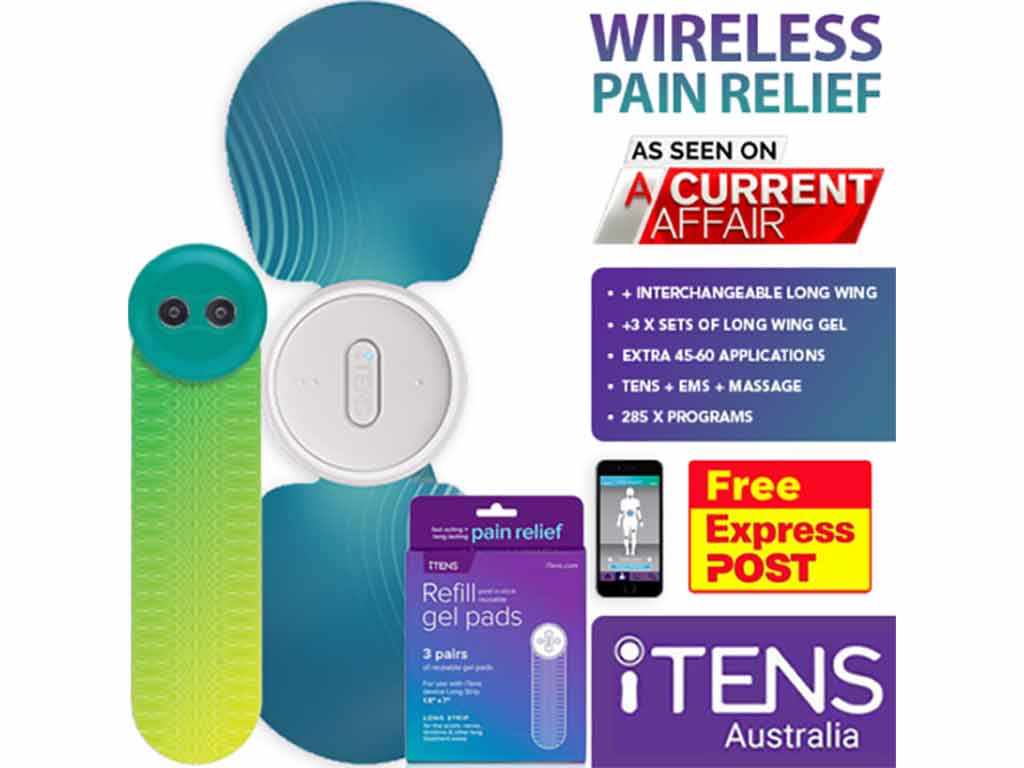
TENS unit Transcutaneous Electrical Nerve Stimulation is an electronic device that delivers electrical currents to the body as a method of pain relief. Consequently, this electrical stimulation works in various ways. Foremost, it can block the transmission of pain messages. Also, the electrical pulses can trigger the release of endorphins and improve blood flow. With such mechanisms, TENS therapy is suitable for different types of pain, whether acute or chronic pain. This may also include musculoskeletal pain and neuropathic pain.
Living with ailments can be debilitating. This can impact daily activities and the overall quality of life. Traditional pain management solutions may include prescription medications or surgeries. However, they may be more open to side effects and risks. This prompts many individuals to seek alternative forms of pain relief. One promising approach is the use of electrical stimulation for pain relief. This article will present TENS units, including how they work and the types of pain suitable for TENS therapy.
What is a TENS Unit Transcutaneous Electrical Nerve Stimulation?
The TENS unit Transcutaneous Electrical Nerve Stimulation is an electrical device that uses electric currents to alleviate discomfort. This therapy delivers electrical pulses to the body via electrode patches people attach to the skin. Furthermore, the device is commonly recommended by pain clinics, physical therapists, and health professionals. The unit is also available for home use for individuals.
The TENS device comes in both wired and wireless forms. The wired version typically includes electrode pads connected to the central machine using lead cables. On the other hand, the wireless TENS models utilise Bluetooth technology to connect the control unit to the electrodes. Hence, this offers more freedom of movement to the user. The devices have numerous features, and the pads are available in different sizes and shapes.
Moreover, using the TENS unit is simple. Begin by locating the treatment area and cleaning the skin over it. Then, position the electrode patches, following the proper electrode placement. Finally, turn on the device, adjust the settings, or choose a pre-set program. Nevertheless, consulting a healthcare provider is essential before undergoing TENS therapy. This is particularly important for people with underlying medical conditions.
Benefits
- Non-invasive: It does not require any surgical incisions or invasive procedures.
- Drug-free: TENS therapy does not rely on pharmaceutical drugs to provide relief.
- Targeted relief: This approach allows individuals to tailor the treatment to their precise discomfort symptoms. Hence, it potentially enhances its effectiveness.
- Customisable: It enables people to adjust the pulse rate, intensity levels, and duration of electrical stimulation.
- Cost-effective: The initial investment in a TENS unit may be outweighed by the long-term savings associated with reduced reliance on medications.
- Portable: Most TENS devices are lightweight and compact. This enables users to carry the unit, providing on-the-go pain relief.

How a TENS Unit Transcutaneous Electrical Nerve Stimulation Works
TENS unit Transcutaneous Electrical Nerve Stimulation works through various analgesic mechanisms. Endorphins, the natural pain-relieving chemicals of the body, play a crucial role in TENS therapy. The electrical currents from TENS can trigger the release of endorphins. These endorphins act as natural painkillers, binding to opioid receptors. Hence, it can promote a sense of well-being.
The pain gate mechanism is another primary aspect of how TENS treatment works. According to this, the spinal cord contains a “gate” that can open or close to regulate the transmission of pain signals to the brain. The electrical pulses from TENS can activate non-painful sensory nerves. This can help close the “pain gate”, inhibiting the transmission of pain messages. Thus, it reduces the perception of discomfort.
Furthermore, TENS therapy can enhance blood flow to the affected area. The electrical impulses can stimulate the nerves and muscles, resulting in vasodilation. This increase in blood circulation can promote the delivery of oxygen and nutrients to the body tissues. Nevertheless, this activity can aid tissue repair and reduce discomfort and inflammation.
Frequencies and Intensities
TENS therapy offers a range of frequencies and intensities to accommodate diverse needs. Frequencies typically fall into two categories: high (conventional) and low (acupuncture-like TENS). High-frequency TENS operates at a rate above 50 Hz. This is beneficial for managing acute conditions. Conversely, low-frequency TENS utilises pulse rates ranging from 1 to 20 Hz. This is valuable for chronic conditions.
In terms of intensity, TENS therapy provides a spectrum of adjustable settings to regulate the strength of the electrical pulses. These intensity settings allow users to tailor the treatment to their needs and preferences. This intensity can be a gentle to a stronger tingling sensation.

Types of Pain Suitable for TENS Unit Transcutaneous Electrical Nerve Stimulation
TENS unit Transcutaneous Electrical Nerve Stimulation proves itself applicable to various pain types. Firstly, TENS therapy effectively addresses acute pain, which arises suddenly. This may result from postoperative pain, primary dysmenorrhea, and labour pain. Secondly, TENS can manage chronic pain conditions. Arthritis pain and fibromyalgia fall into this category.
Thirdly, TENS treatment is beneficial for neuropathic pain. It originates from damage or dysfunction of the nervous system. This may include phantom pain, post-herpetic neuralgia, and diabetic neuropathy. Fourthly, the TENS unit is a valuable tool for treating musculoskeletal pain. This type affects the muscles, bones, ligaments, and tendons. It may include osteoarthritis and rheumatoid arthritis.
Lastly, TENS therapy is suitable for targeting muscular discomfort. This may arise from overexertion, tension, or muscle strain. TENS targets the muscles with mild electrical currents. Then, it can promote muscle relaxation and reduce localised discomfort. Overall, TENS units offer pain-relieving benefits to a wide spectrum of pain types. This makes it a versatile and efficient option for individuals.
Potential Side Effects
One common side effect of TENS therapy involves skin irritation at the electrode placement site. This may manifest as redness or itching. Hence, proper electrode techniques and regulation inspection of the skin are essential to mitigate this side effect. Additionally, individuals with sensitive skin may experience allergic reactions to the adhesive used in the electrodes. Utilising hypoallergenic electrodes can reduce the likelihood of this effect.
While rare, some may experience an increase in discomfort following TENS therapy. This is particularly true if the therapy parameters are not adjusted correctly to suit pain tolerance. Careful monitoring and adjustment of TENS settings can help minimise this risk.
Conclusion
Overall, the TENS unit Transcutaneous Electrical Nerve Stimulation is a highly effective tool for managing discomfort. It is a wired or wireless device with various features, and the electrodes can have different shapes and sizes. Accordingly, TENS therapy delivers electrical currents to the body via electrodes placed on the skin. This can inhibit the transmission of pain signals, trigger the release of endorphins, and promote blood flow. The electrical pulses can also stream in different frequencies and intensities.
Furthermore, TENS treatment provides numerous benefits. It is non-invasive, drug-free, customisable, cost-effective, portable, and gives targeted relief. With such mechanisms and benefits, TENS therapy is suitable for a wide range of pain types. This may include primary dysmenorrhea, fibromyalgia, post-herpetic neuralgia, rheumatoid arthritis, and muscle strain. However, knowing the potential side effects of TENS is vital for safe use. TENS devices are available in the market, including the online retailer iTENS Australia.







